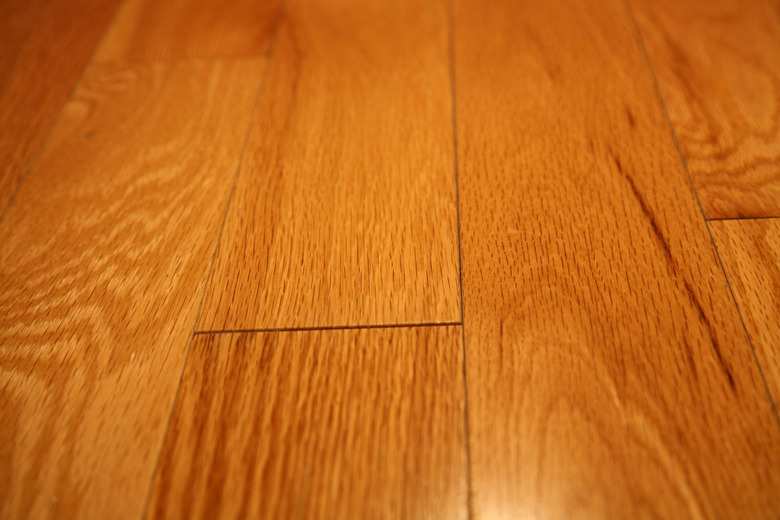How To Remove Wood Finish With Acetone
Things Needed
-
Dry cloth or towel
-
Plastic putty knife
-
Drum sander
-
Edge sander
-
Palm sander
-
20 to 36, 60, 80 and 100 grit sandpaper
The finish on a wood floor protects it from stains and scratches and gives it a polished look. Wood finishes, often oil-based, may need to be removed for remodeling or redecorating purposes. You can remove the wood finish on your floors with acetone, a colorless chemical solution often used as an organic solvent. However, acetone alone may not completely remove your floor's wood finish. Sanding the floors after applying the acetone will help strip the remaining finish from the floor.
Step 1
Remove all items from the room, including rugs and furnishings. Check the floor for nails. If any nails are protruding from the hardwood floor planks, they should be pounded beneath the surface with a hammer.
Step 2
Pour acetone over a dry cloth or towel until damp. Scrub the hardwood floor with the towel. Start at one side of the room and work your way across.
Step 3
Allow the acetone to soak into the floor for at least five minutes. Then, repeat the acetone application.
Step 4
Scrape up any stains, such as paint stains, that remain on the hardwood after the treatment using a plastic putty knife. Allow the second coat of acetone to dry.
Step 5
Push a drum sander, fitted with 20 to 36 grit sandpaper, across your hardwood floor. Move the sander in straight, smooth motions along the direction of your floor's wood grains. Use an edge sander, fitted with coarse sandpaper, to sand any areas difficult to reach with the drum sander. Use semicircular motions when using the edge sander.
Step 6
Fit both the edge sander and drum sander with 60 grit sandpaper. Repeat the process outlined in Step 5. Then fit each sander with 80 grit sandpaper and repeat the same technique again. Repeat the technique one more time with 100 grit sandpaper fitted in each sander. Sand around the room with a palm sander in circular strokes to finish the sanding process. Vacuum the room and apply a new finish as desired.
Tip
Refrain from stopping the drum sander while it is still on during the sanding process. The sander can gouge the floor if left running in one spot.
Warning
Wear safety gloves and safety goggles when working with acetone and sanding tools to avoid chemical exposure, cuts or other injuries.
References
- American Chemical Society: The Solvent Properties of Acetone
- This Old House: How to Strip a Hardwood Floor
- "Wood Flooring: A Complete Guide to Layout, Installation & Finishing"; Charles Peterson; 2010
